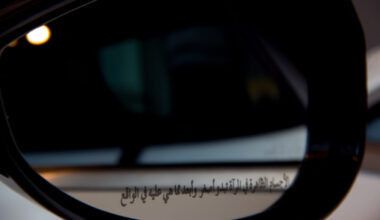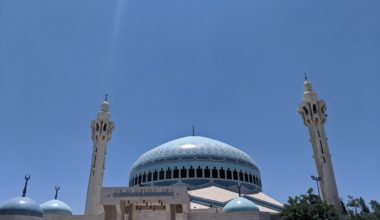
By Dr Mirjam Twigt, 2018 CBRL Visiting Fellow
In my forthcoming book, which I worked on during my recent CBRL Fellowship in Amman, I provide an ethnographic exploration of the ways that refugees living in prolonged displacement use technology. Uncertainty is the norm in the lives of refugees worldwide with seventy-eight per cent finding themselves in prolonged legal and social uncertainty in both low- and medium-income non-western countries. My research explores the social and subjective functions of digital connectivity in the lives of forced migrants amidst these structural conditions. I draw upon data obtained during nine months of fieldwork in 2015 within Iraqi refugee households in Jordan’s capital, Amman.
Refugee protection in Jordan is inherently designed to be temporary. Jordan is not a signatory to the 1951 Refugee convention nor its related 1967 protocol, aimed to ascertain that host countries provide comprehensive refugee protection. Instead, the Memorandum of Understanding (MoU) with the Jordanian government enables United Nations High Commissioner for Refugees (UNHCR) Jordan to safeguard the ’protection needs’ of the many refugees who are residing in Jordan, but only to a limited extent (Kagan, 2011). For example, while there have been important steps towards formal inclusion of Syrian refugees in Jordan’s labour force, work rights for non-Syrian refugees continues to be restricted (Lenner & Turner, 2018).
The MoU also stipulates that local integration – one of the three conventional durable solutions for prolonged refugee situations, next to resettlement and voluntary repatriation – is not possible. A durable solution needs to be found outside of Jordan. However, returning to one’s native country is often not viable and humanitarian admission programmes and innovative pathways are limited as it depends on the goodwill of third-party countries. The majority of refuges in Jordan have now resided there for over 5 years; yet it remains uncertain whether they will be allowed to stay and, therefore, where their futures will lie. While humanitarian assistance decreases, social and legal difficulties continue to prohibit the ability to obtain a sense of normality.
Adam is a young Iraqi refugee who has been living in just such a circumstance since 2006, describing his life in Jordan as a ‘waiting stop.’ He says that his laptop computer ‘changed his life,’ alleviating the boredom, limited opportunities and prolonged insecurity of life in Jordan as a refugee. Since he finished high school, Adam has had several informal jobs, but police arrests and exploitation are an important disincentive to work. Instead, most of his time is spent at home, playing video games and connecting with his many family members and friends who were able to travel to western countries.
People do not experience the world through one singular medium. Like Adam, most Iraqi people I worked with described their life as ‘waiting’ and drew upon different media forms, including TV and smartphones, online and offline interactions, their own socio-historical and situational circumstances in order to make sense of their experiences of displacement. Despite sometimes apparent financial struggles, almost all adults and teenagers I interacted with owned a smartphone. The TV was also almost always on in the households I visited, further pointing to the importance of media consumption in the daily lives of Iraqi refugees.
Since 2015, there has been an increase in policy reporting and academic attention on forced migrant’s digital connectivity. Publications on refugee situations in the Global South tend to celebrate technology-use by humanitarian and development operations resulting in an industry of top-down designed refugee-oriented smartphone applications. These applications somehow presume that refugees – prior to and whilst seeking refuge – are untouched by the globalised ubiquity and pervasiveness of technology. Relatively little attention is given to what communication technologies refugees actually use, what refugees say that they need and how their precarious living conditions interact with their needs and use.
My research aims to develop a deeper understanding of how refugees make sense of their status as already digitally connected human beings, amidst socio-legal and temporal difficulties. In the past, experiences of forced displacement have been mediated, for instance, through story-telling and cultural objects. Today, however, the immediacy and persistence of information, connections and images of people, places and times elsewhere brings a new dimension to the displacement experience.
I found that technologies have both positive and negative influences in the lives of Jordan’s Iraqi refugees. Distinguishing between the ‘good’ or ‘bad’ of technologies reduces the complexity in which forced migrants navigate the everyday. Technologies help to stay connected to family and friends – dispersed across nation-states – and traverse precarious temporal and legal circumstances. They play a central role in how refugees communicate and understand the potentials of humanitarian operations. What’s more, I found that technology is contributing to refugees’ sense of stability and safety, allowing them to stay optimistic about the future (Twigt, 2018).
At the same time, technology can be messengers of bad news and bring about a sense of loss. Precarious circumstances – related to war, flight and insecurity – can aggravate information precarity (Wall, Campbell & Janbek, 2017), result in self-censorship and even hinder contact with loved ones since technologies tend to be used for border policing and state control (Papadopoulos, Stephenson & Tsianos, 2008).
By highlighting the importance and complexity of digital connectivity in refugees’ lives, I do not suggest that technologies can solve structural difficulties around prolonged displacement. Quite the opposite: how technologies are and can be used is deeply embedded in broader power structures. However, it is important to recognise that refugees are very much part of our connected world. Not only are their experiences of forced displacement often entangled in broader capitalist and (neo)colonial interventions, but they increasingly draw upon transnational connections, mediated images and information to make sense of their experiences.
Not all of the world’s forced migrants have equal access to technologies. Yet, it is safe to say that the prolonged uncertainty in which many of them live, does heighten the necessity for digital connections: to obtain and doublecheck information on life back home, to communicate with dispersed loved ones and to continuously navigate life in new and/or uncertain terrains.
References:
*Gillespie, M., Ampofo, L., Cheesman, M., Becky, F., Iliadou, E., Issa, A., Osseiran, S. and Skleparis, D. (2016). Mapping Refugee Media Journeys. Smartphones and Social Media Networks. ResearchReport The Open University / France Medias Monde.
Kagan, M. (2011). “We live in a country of UNHCR” The UN Surrogate State and Refugee Policy in the Middle East. New Issues in Refugee Research.
Lenner, K. and Turner, L. (2018). Making Refugees Work? The Politics of Integrating Syrian Refugees into the Labor Market of Jordan. Middle East Critique
Twigt, M. (2018). The Mediation of Hope: Digital Technologies and Affective Affordances within Iraqi Refugee Households in Jordan. Social Media + Society, Special Issue Forced Migrants and Digital Connectivity.
Wall, M., Otis Campbell, M. and Janbek, D. (2017). Syrian refugees and information precarity. New Media & Society. Volume 19, Issue 2, pp. 240 –254.
Papadopoulos, D., Stephenson, N., & Tsianos, V. (2008). Escape Routes. Control and Subversion in the 21st century. Lonon: Pluto Press.
Mirjam Twigt is an anthropologist, specialised in forced migration in the MENA-region, media-use by forced migrants and bottom-up knowledge production on migration. After completing her PhD, she worked on a research project on local journalism on migration in different African countries and as research officer for ARDD, a Jordanian NGO working towards access to justice for all. From September 2018 to February 2019, she was a postdoctoral fellow at the British Institute of Amman.
The views expressed by our authors on the CBRL blog are not necessarily endorsed by CBRL but are commended as contributing to public debate.















